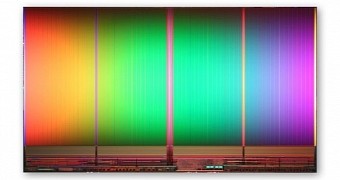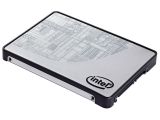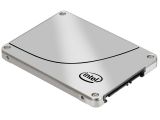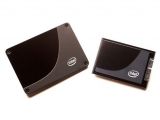Central processing units may be Intel's main bread and butter, but solid state storage technology has been showing up more and more in its product releases, roadmaps and blogs. The latest advancement in this field may even give everyone else pause.
At present, Samsung and Toshiba are the primary creators and vendors of solid state NAND chips. Toshiba was the first company to make NAND chips in fact, when Dr. Fujio Masuoka invented them back in 1980.
Since then, however, Intel has licensed enough patents and has come up with some of its own, which has allowed it to gain a stake in the segment. It wasn't keen on being just another SSD OEM like OCZ or SanDisk (although SanDisk does have its own tech as well).
Fast forward to the present and Intel has made an announcement that might give all the other companies above a reason to be concerned.
3D NAND chips allow for SSDs of over 10 TB
Intel hasn't neglected all the recent breakthroughs in the sector of flash memory, most notably the M.2 form factor and motherboard interface.
However, that does not mean it shares the same focus as everyone else. Rather than small, compact drives, Intel has a special liking for larger and capacious storage devices. It fits with its business / enterprise MO, though consumer units aren't unheard of either.
The 3D NAND chips are made of 32 layers and have a combined storage space of 32 GB (256 Gb). It is possible to make 384Gbit (48GB) TLC (3-bit-per-cell) as well, but there are no chips like this yet.
In a way, Intel has a clear advantage over Samsung, whose NAND chips only go as high as 128 Gb. But as certain people pointed out, Samsung also went from a 24-layer 120 Gb MLC die to 32-layer 86 Gb MLC die, so it could raise the capacity to 170 Gb just by adding extra layers if it wanted.
In any case, Intel's 256 Gb die should enable high array efficiency thanks to less area needed for peripheral circuitry, making it very cost-effective. However, the difference might be negligible even though Intel claims otherwise.
The main selling point of Intel 3D NAND
By properly stacking the chips and bringing a number of them together in the same 2.5-inch unit, and perhaps M.2 or PCI Express cards, Intel will release solid state drives with 10 TB capacity or greater. The ETA for them is the next two years or so.
The capacity might have to grow beyond the current upper limit of 256 Gb though, since current-gen 128 Gb dies only allow for 2 TB. We're probably going to go through the second and third generation of 3D NAND before 10 TB SSDs reach the market. So the estimated time of arrival is mid-2015 or later.

 14 DAY TRIAL //
14 DAY TRIAL // 



